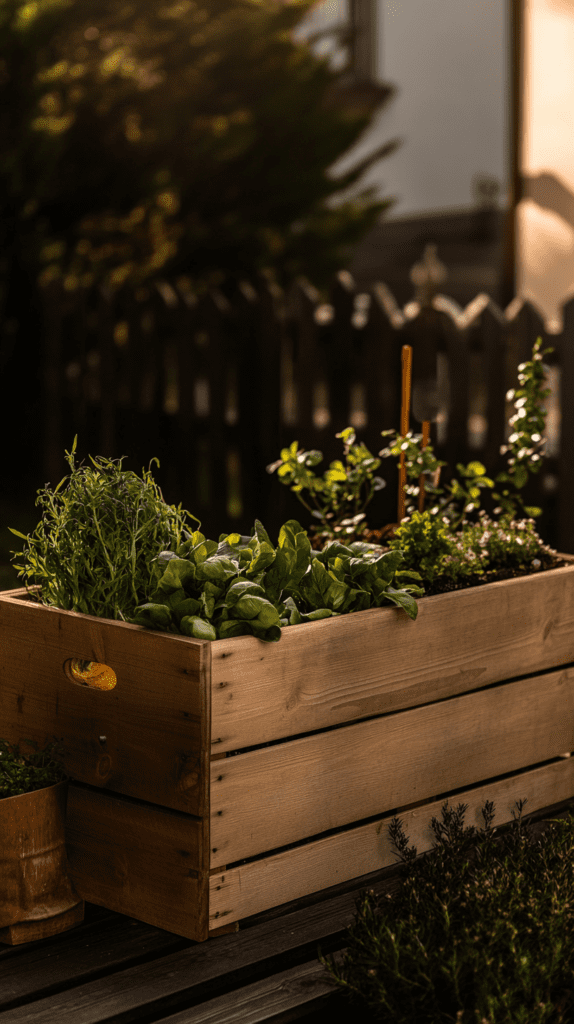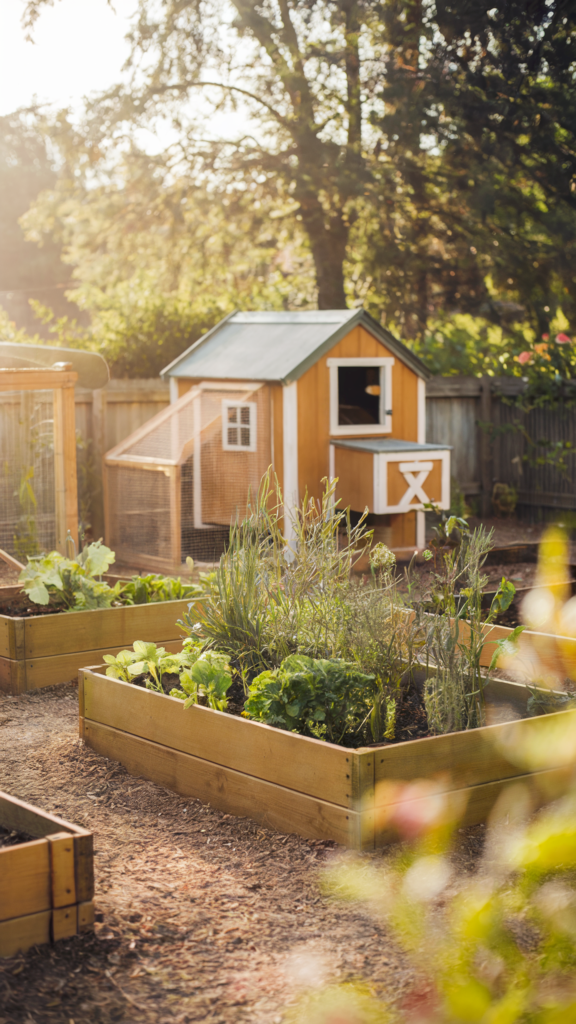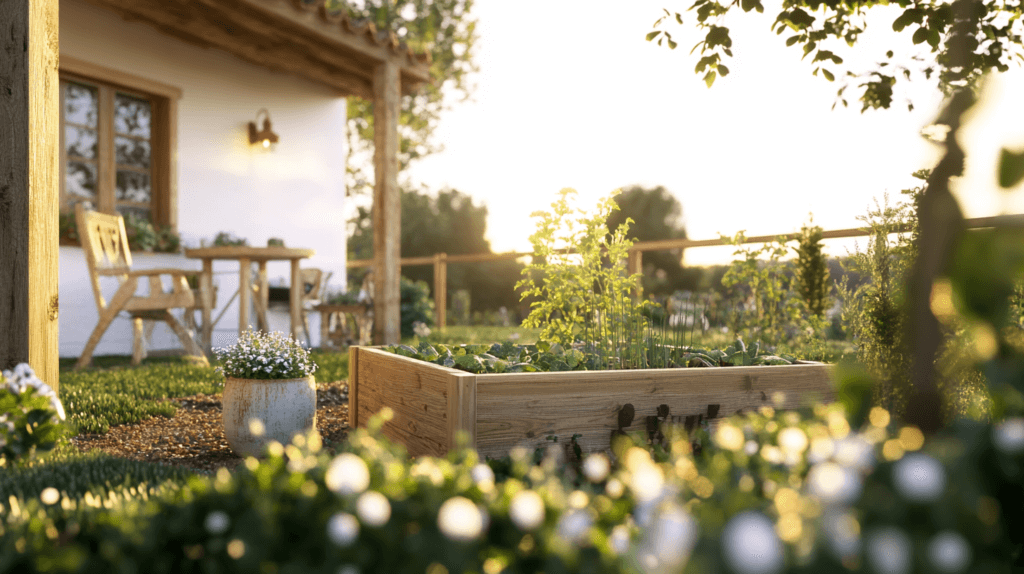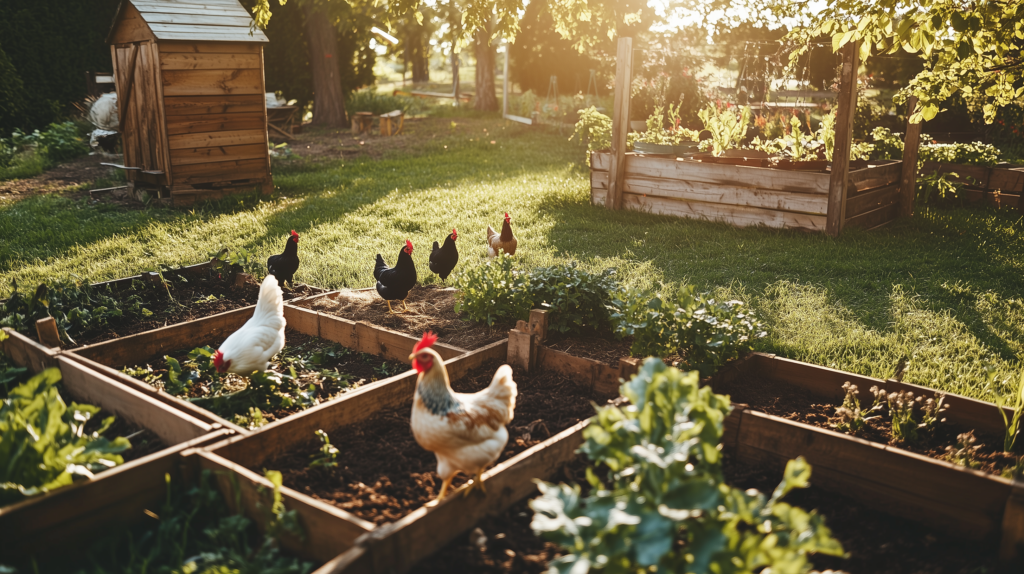This post may contain affiliate links, including those from Amazon Associates. If you make a purchase through these links, I may earn a commission at no additional cost to you. Learn more about our affiliate policy.
There’s something about those first warm breezes of spring that feels like a deep exhale after a long winter. The air shifts, birdsong returns, and suddenly the world feels alive again.
Spring is the perfect time for new beginnings, especially when it comes to urban homesteading. Whether you have a backyard, a patio, or just a few sunny windows, there’s an undeniable pull to get your hands in the dirt and start something fresh.
The longer days and warming temperatures make it the ideal season for growing food, attracting pollinators, and setting up sustainable systems that will flourish throughout the year.

For me, spring always starts with that first trip to the local nursery where I inevitably buy more seedlings than I have space for. But I love the challenge of making the most of every nook and cranny. Over the years, I’ve learned that even the smallest of spaces can become an abundant oasis with a little creativity.
If you’re feeling that same energy and anticipation, here are 15 creative spring projects for urban homesteaders to help you make the most of this vibrant season.
Upcycled Container Gardening

If you’re short on space but eager to start planting, upcycling household items into planters is a fun and sustainable way to grow food and herbs. Not only does this give new life to old objects, but it also allows you to garden in unexpected places—balconies, patios, and even kitchen windows.
Rain Boot Herb Garden – Fill colorful old rain boots with soil and plant herbs like basil, mint, or chives. They add a whimsical touch to any small-space garden.
Shoe Organizer Lettuce Garden – Hang a fabric shoe organizer on a sunny wall or balcony railing and fill each pocket with soil. It’s a perfect vertical solution for growing lettuce and small greens.
Vintage Teacup Succulents – Repurpose thrifted teacups into adorable microgreen planters or a mini herb collection on your windowsill.
Get started with renter-friendly container gardening.
DIY Raised Bed Gardens

If you have even a small backyard or rooftop, raised beds allow for deeper soil, better drainage, and easier maintenance. They’re also a great way to extend the growing season by warming the soil faster in spring.
Pallet Planter Boxes – Upcycle old pallets into raised garden beds for a rustic, budget-friendly option.
Modular Bed System – Use stackable wooden crates to create a flexible, moveable raised garden setup.
Lasagna Gardening – Skip digging! Layer cardboard, compost, and soil to create a nutrient-rich raised bed with minimal effort.
Here are 7 DIY Affordable Raised Garden Bed Ideas.
Mini Greenhouse for Early Planting

A mini greenhouse is a game-changer for urban homesteaders eager to get a jumpstart on the season. It protects young seedlings and extends your growing window.
Plastic Bottle Greenhouse – Cut large plastic bottles in half and place them over seedlings for a budget-friendly greenhouse effect.
Repurposed Window Frame Cold Frame – Old window panes can be turned into a simple cold frame that traps warmth and shields fragile plants from late frosts.
Indoor Grow Light Setup – A small shelving unit with grow lights allows apartment dwellers to grow fresh greens all year long.
Learn to build a mini greenhouse from old window frames here.
Urban-Friendly Chicken Coop

For those with a bit of backyard space, chickens are an amazing addition to an urban homestead. They provide fresh eggs, natural fertilizer, and pest control.
Portable Chicken Tractors – A lightweight mobile coop allows chickens to graze while protecting them from predators.
Vertical Chicken Run – Maximize space by building a tall coop with stacked nesting areas and climbing features.
Self-Watering Chicken Feeder – Repurpose a rain barrel or large container to create a low-maintenance watering system.
New to raising chickens? Check out 6 Steps to Start Raising Chickens for Beginners.
Herb Garden for Culinary and Medicinal Use

Herbs are among the easiest plants to grow in small spaces and provide incredible benefits for cooking and wellness.
Mason Jar Herb Wall – Attach mason jars to a wooden board to create a compact vertical herb garden indoors or outside.
Spiral Herb Garden – Use stacked stones or bricks to create a spiral-shaped bed that maximizes space and allows for different soil needs.
Hanging Basket Herb Garden – Free up counter space by growing herbs in hanging baskets near a sunny window.
Get more ideas for diy indoor vertical herb gardens here.
Create a Frog Pond for Natural Pest Control

A small frog pond invites natural pest control while adding a peaceful element to your garden.
Kiddie Pool Pond – Bury a small plastic kiddie pool, surround it with plants, and create a microhabitat for frogs and pollinators.
Whiskey Barrel Water Feature – A half-barrel with floating aquatic plants is an easy, low-maintenance way to attract beneficial wildlife.
Stacked Rock Watering Hole – Create a simple rock-lined water feature that provides moisture for frogs, birds, and pollinators.
Pollinator Garden for a Thriving Ecosystem

Pollinators are essential for a productive garden, and you can attract them even in a small space.
Bee-Friendly Planters – Grow lavender, coneflowers, and calendula in window boxes to support native bees.
Butterfly Watering Station – A shallow dish filled with damp sand and pebbles provides a hydration spot for butterflies.
Vertical Pollinator Wall – Train climbing flowers like honeysuckle or jasmine up a trellis to create a lush, pollinator-friendly backdrop.
Learn how to start a low-maintenance pollinator garden here.
Vermicomposting for Indoor Composting
Even if you don’t have outdoor space, you can turn kitchen scraps into rich compost with worm composting.
DIY Worm Bin – Stackable plastic bins make a simple and efficient vermicomposting setup.
Under-the-Sink Composting – A compact worm bin under the sink keeps scraps out of the landfill while feeding your plants.
Upcycled Dresser Drawer Composter – Repurpose an old wooden drawer as a rustic composting box for your balcony or patio.
Microgreens Station for Year-Round Fresh Greens

Microgreens are nutrient-dense and grow quickly, making them a fantastic choice for urban homesteaders.
Bookshelf Microgreens Farm – Repurpose an old bookshelf into a multi-tiered growing station with LED grow lights.
Repurposed Egg Cartons – Perfect for beginners, egg cartons make excellent microgreen seed trays.
Self-Watering Microgreens Tray – Convert a storage bin into a low-maintenance microgreen-growing setup.
Urban Beekeeping for Pollination & Honey
If local regulations allow, beekeeping can be a rewarding addition to an urban homestead.
Rooftop Beekeeping – Small-scale hives fit perfectly on rooftops and balconies.
Mason Bee House – Encourage non-stinging native bees with a DIY wooden bee hotel.
Edible Window Boxes for Apartment Dwellers

Windowsills offer valuable growing real estate for compact food production.
Kitchen Window Box – Grow fresh herbs, dwarf tomato plants or strawberries within arm’s reach of your cooking space.
Balcony Mushroom Log for a Unique Crop
Mushrooms thrive in shaded, damp areas, making them ideal for small-space homesteading.
Oak Log Mushroom Garden – Inoculate a log with shiitake or oyster mushroom spores and keep it in a shaded spot.
Coffee Grounds Mushroom Bucket – A five-gallon bucket filled with coffee grounds creates an ideal environment for mushrooms.
Vertical Hanging Mushroom Bags – Fill hanging bags with mushroom-growing substrate for a space-saving harvest.
DIY Seed Bombs for Guerrilla Gardening

Seed bombs are small balls made of clay, compost, and seeds that can be tossed into soil to sprout flowers, herbs, or native plants with minimal effort. Perfect for urban spaces, seed bombs help bring greenery to neglected areas and encourage a love for nature in children.
Here are some directions for creating your own seed bombs from Wildlife Trusts.
Rainwater Harvesting for Sustainable Watering

Reduce reliance on municipal water with simple collection systems.
DIY Rain Barrel System – Collect and store rainwater for garden irrigation.
Terracotta Pot Watering System – Bury clay ollas to create a slow-drip watering system.
Balcony Water Catchment – Set up a small gutter system to collect water for container gardens.
Seasonal Spring Foraging Walks

Urban homesteaders can make use of local parks and green spaces for wild food gathering.
Dandelion Harvest – Use dandelion greens for salads and make tea from the roots.
Wild Garlic Pesto – Forage wild garlic and blend it into a fresh, flavorful pesto.
Nettle Soup – Harvest young stinging nettles (wear gloves!) for a nutrient-rich spring soup.
Bringing Your Urban Homestead to Life This Spring
Spring is the perfect time to refresh your space, try new projects, and embrace the growing season with enthusiasm.
The beauty of backyard homesteading is that it doesn’t have to be overwhelming. Start with one or two ideas that excite you, and let the momentum build from there. Before you know it, your small space will be bursting with fresh herbs, pollinators, and homegrown produce, bringing a deeper sense of connection to your daily life.



